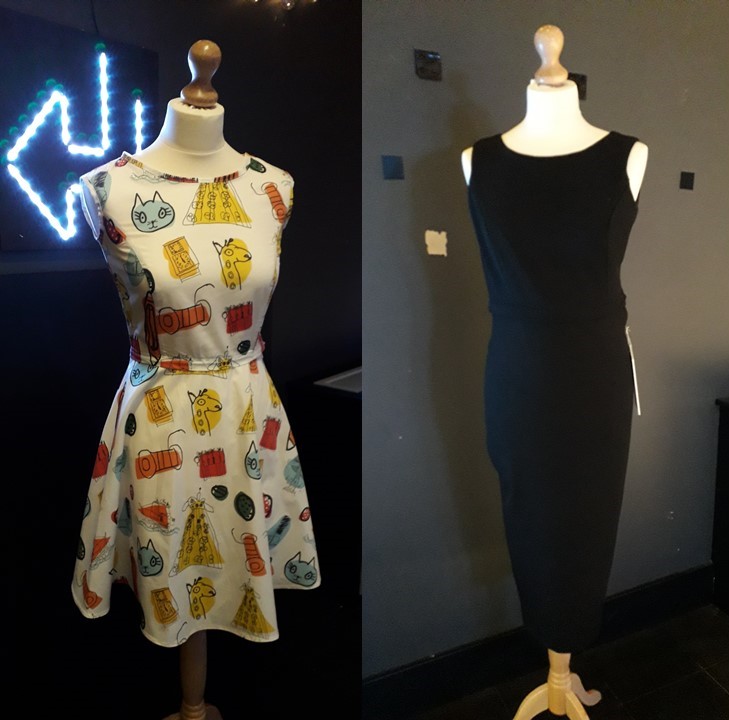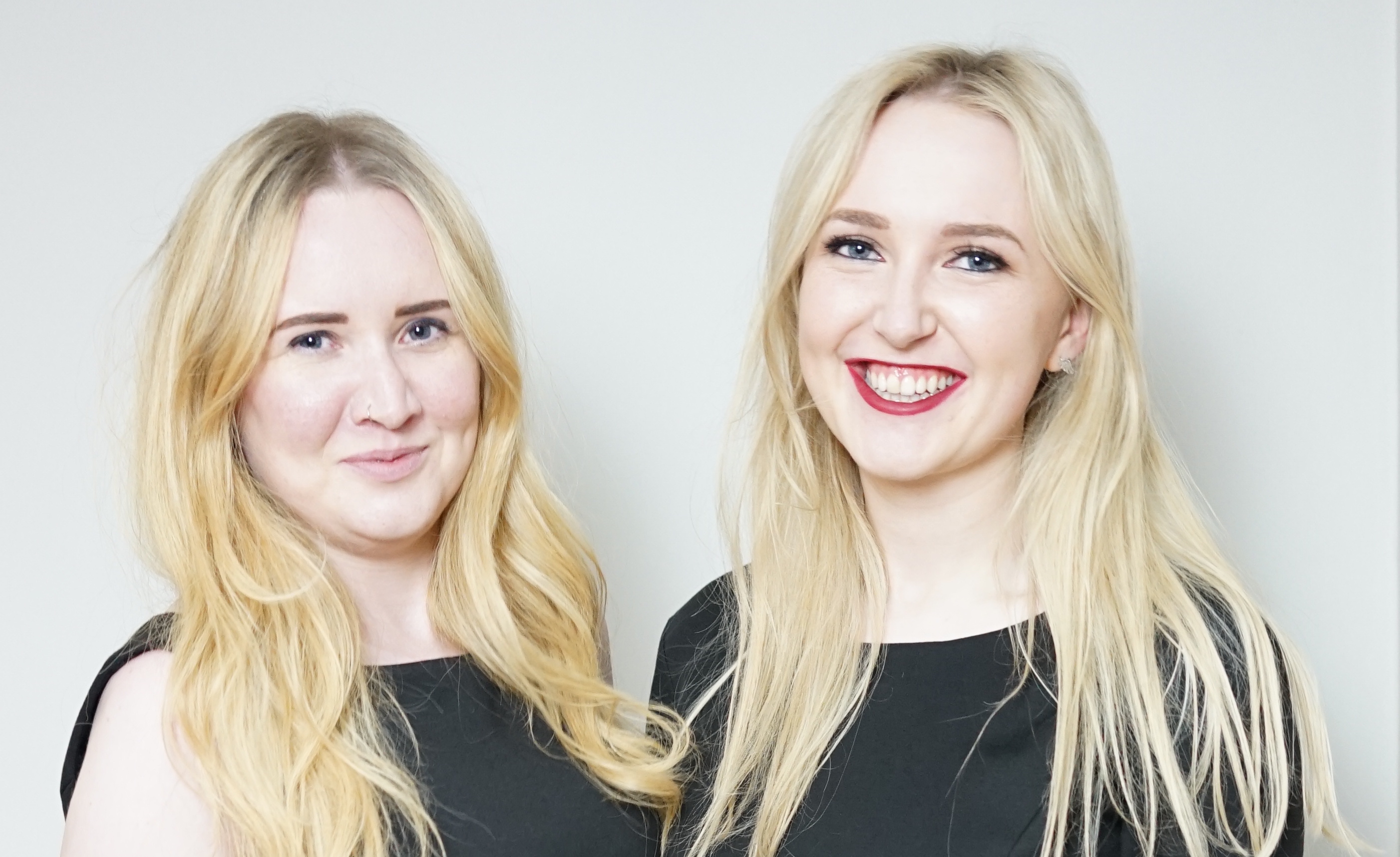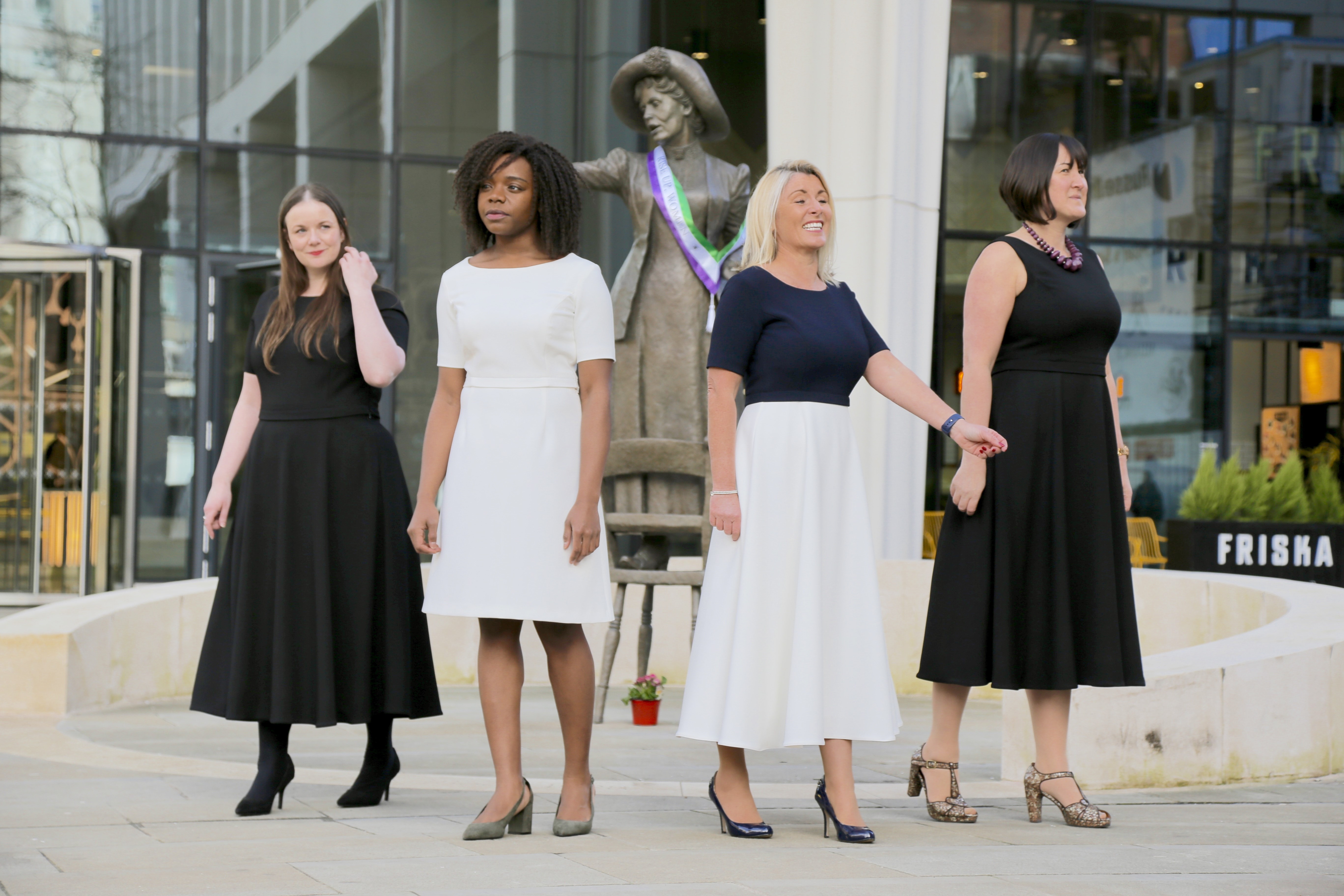Please note: The event discussed below took place in 2019. To find out what exhibitions and activities are open today, visit our What’s On section.
If you’ve visited the museum over the Spring holidays and taken part in our Recycled Runway workshop you may have spotted these two beautiful dresses while you strutted your stuff down the catwalk. They’re created by Careaux, a company run by two sisters whose mission is to reinvent dresses for the modern woman. We asked Rachel Beattie, Director and Co-founder of Careaux to explain her thoughts on why standard clothing sizing needs changing and how a background in maths is helping her make better fitting dresses for every woman:
Ever since I was little and I would visit the Science and Industry Museum, I have been amazed how it’s filled with incredible inventions, and the stories behind them of doing something you have never done before or creating something that never existed before and how much perseverance and determination it took to make them a reality. This really inspired me when I was younger to believe that maths is for everyone and that when I couldn’t do something straight away (which happened a lot and in all my other subjects!) I knew that if I kept trying and asked for help I would get there. I grew up believing maths is everywhere and that we all use maths every day without even realising. All of that went into the founding of Careaux.
Rachel (right) with her sister LauraI first had the idea when I was studying for my GCSEs. Maths and Art were my two favourite subjects and the idea combined these two interests plus my love for fashion. I wanted to create a dress that would fit every woman. We are all different. We are all different shapes, different sizes, different styles, different personalities, different everything and these all change throughout our lives. Yet clothing does not reflect this, especially standard sizing.
Clothes sizing for men is thought to have existed since before the American Revolution. Standard sizing started in the military, where uniforms were based on only a single measurement across the chest. Once women’s clothing was introduced in the early 1940s, the military model continued with everything being based on the measurement across the bust. However, this didn’t really work, and it was estimated that manufacturing without standard sizing was costing business around £10 million per year, so the U.S. government set out to solve it. They did this by taking a sample of 15,000 women in order to create standard sizing. Although the sample was selected as a result of people volunteering for a paid fee, they still did not get a diverse range of female volunteers and the measurement was again largely based on bust size and an assumption of an ‘hourglass’ shape.
According to this article in The Express, in Britain, before the Industrial Revolution, clothes were made by a tailor and altered at home if necessary. As industrialisation meant clothes could be made on a mass scale, manufacturers needed a way of producing them that fitted the maximum number of people while still being economically efficient. It was then that the science of anthropometry (the measurement of the human body) came into its own. This led to the conclusion that the difference in body measurements of the general population were relatively small and, in combination with the development of the paper pattern, resulted in sizes. In 1957 the National Joint Clothing Council compiled the first British Standard of Women’s Measurements and Sizes which was used until 1982 when it was replaced by British Standard ISO 3635 Size Designation of Clothes, where the familiar 8 to 32 came in. However, these sizes were never compulsory. As bodies changed, vanity sizing began to skew the numbers even more. Manufacturers would label clothing different sizes in order to drive sales by their customer’s preferences. This meant that the government size guides were no longer used and instead stores started using their own interpretation of sizing.
Growing up, my Nana was a dressmaker and she used to talk so passionately about the importance of fit, quality and tailoring each piece to the individual woman. Alongside this, I used to borrow my sister, Laura’s clothes when I was a teenager (ok…and still now) but I would try them on and they would either be too small on top or I wanted to add sleeves, and this changed throughout the years. This made me realise the contradiction of how each and every one of us is different – but clothing simply didn’t reflect this. There was the introduction of different ranges such as tall, petite or plus-size but this was still putting women into brackets, instead of clothing being your size, your shape, your style, no segregation, truly diverse and always inclusive.
I wanted to get rid of the feeling you have when you try a dress on and it doesn’t fit right and doesn’t feel like you. You feel as though you should change to try and fit into the dress and I wanted to stop anyone ever feeling like that. I wanted to create a dress that changed to fit us. We set out to create a dress that adapted to the needs of women and designed for women to have full control over the it – to choose the style, choose the shape, choose the size.
This is not only an issue for women and the industry either. Sizing and fit is one of the major issues in the fashion industry and one of the main reasons for returns. This contributes to £140 million of unused clothing in UK landfills according to WRAP UK. They say if we extended the active lifetime of clothes by nine months we would reduce the annual carbon, water and waste footprint of clothing by 20-30%.
As clothing itself and sizing has been left unchanged for far too long, we wanted to reinvent dresses as we know them for the women of today and the girls and women of the future and we used maths to help us.
The Careaux dress has a hidden zip around the waist, which enables the dress to split into a top and a skirt. This means the dress can have a different or same size top to its bottom. Did you know over 90% of women have a different size top to bottom? Plus, this means you can interchange the tops and the skirts to create different dress styles, fabric and colour combinations. The dresses are made locally in Manchester and we work with suppliers who have a strong commitment to social responsibility and sustainability including using fabric saved from landfill for recycled and recyclable packaging.
I graduated two years ago from The University of Manchester with a Masters in Maths and I have used maths and engineering in the dress in numerous ways, from measuring and sizing for a better fit to combinatorics (a topic in maths studying the number of ways you can combine different things together) such as the number of dresses = number of tops x number of skirts. But Maths has also helped my entrepreneurial mindset. It’s taught me about the importance of determination and perseverance, trying different ways to reach a solution and never giving up, which has all been critical in starting a business.
As none of us at Careaux had ever run a business before or knew anyone who had run a business or even have a fashion background, it has taken many years of failing, testing and learning. This is still ongoing but our vision of a better dress for every woman continues to drive us. Just like those knotty maths problems or the inventions I saw as a kid at the museum, I’ve learnt that perseverance and determination have been critical.
All images provided by Rachel Beattie.


